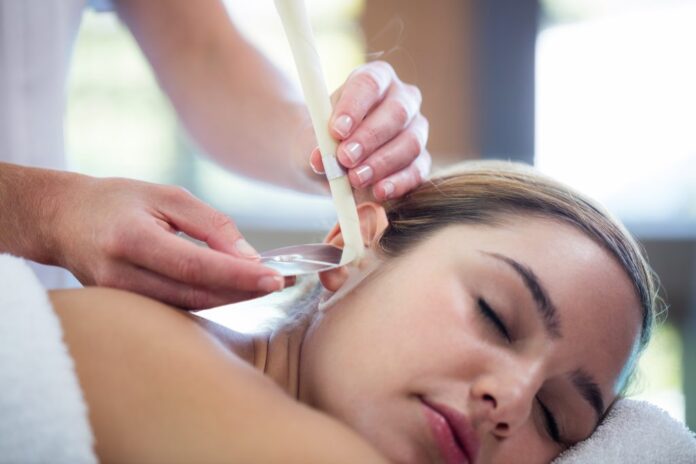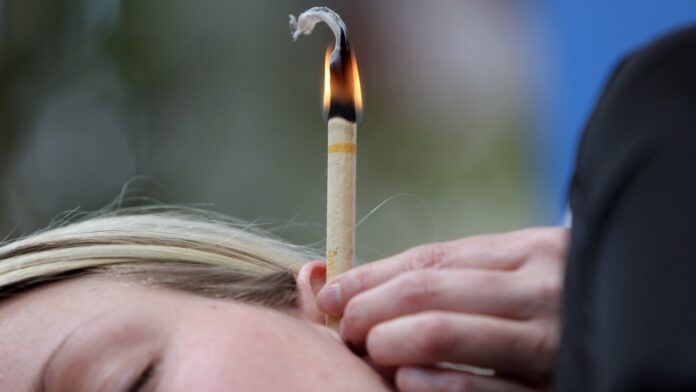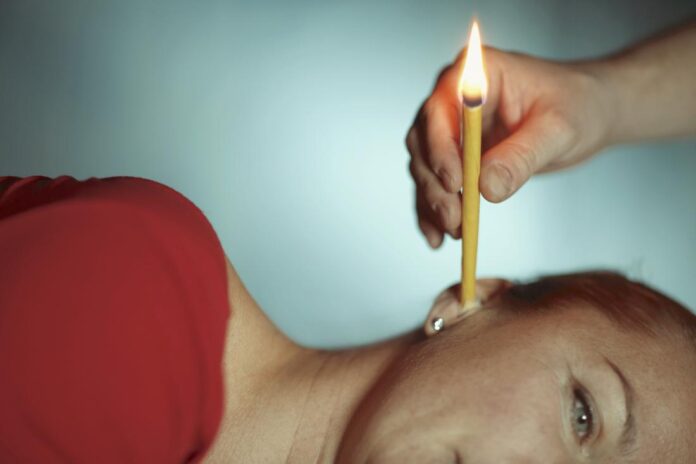Ear candling is a practice that has been around for centuries. It involves placing a hollow, cone-shaped candle in the ear canal and lighting it on the other end. The idea behind this practice is that the heat created by the candle will melt and remove toxins, and other impurities from the ear canal. However, there is little scientific evidence to support these claims.
Ear Wax: What Is It?
Before we dive into the science of candling, let’s first understand what ear wax is. Also known as cerumen, is a natural substance produced by glands in the canal. Its primary function is to protect the canal from dust, dirt, and other foreign particles. It also helps to lubricate and clean the ear canal.
What is Ear Candling?

Ear candling, or coning, is a traditional practice used for healing and cleansing and can date back thousands of years. The candle itself is an approximately 12-inch-long hollow tube made from a fabric or paper material. It is usually soaked in beeswax, herbs, and other elements to create an aromatherapy effect. During the candling process, the candle is lit at one end and then placed into the subject’s ear canal allowing heat to travel down the length of the candle drawing out impurities that have accumulated in the canal.
Potential Benefits
Despite the lack of scientific evidence, there are some potential benefits that have been associated with candling. Proponents of the practice point to these benefits and suggest that candling can reduce/eliminate a variety of symptoms, including:
– Earache
– Tinnitus (ringing in the ears)
– Sinus pressure and congestion
– Headache
– Excessive earwax buildup
– Difficulty hearing in one or both ears
Many people find the experience of candling to be relaxing and soothing. The warm sensation created by the candle can help to relieve stress and tension in the body, leading to a sense of calm and well-being.
Potential Risks

Although candling is marketed as a safe and natural therapy, it is not risk-free. Possible complications that can result from use include perforation or damage to the ear. It has been reported that a number of individuals have suffered an injury, including hearing loss and even facial burns caused by drip wax onto the skin or heating the candle too close to the ear. Additionally, the use of foreign objects, such as sticks and pens, have been used instead of an appropriately designed ear-candling apparatus which can also lead to serious injury.
Conclusion
In conclusion, ear candling is not a medically accepted practice and should be avoided by anyone seeking relief from ear problems. The use of alternative methods such as aural micro-suctioning and irrigation may provide some relief of certain symptoms, but these should only be done under the supervision of an experienced medical professional.
Finally, it is important to note that while many falsehoods related to ear candling have been discussed here, it cannot be denied that there are people who have had successful experiences with this practice; however, this does not make it any safer or more effective than proven medical treatments.




